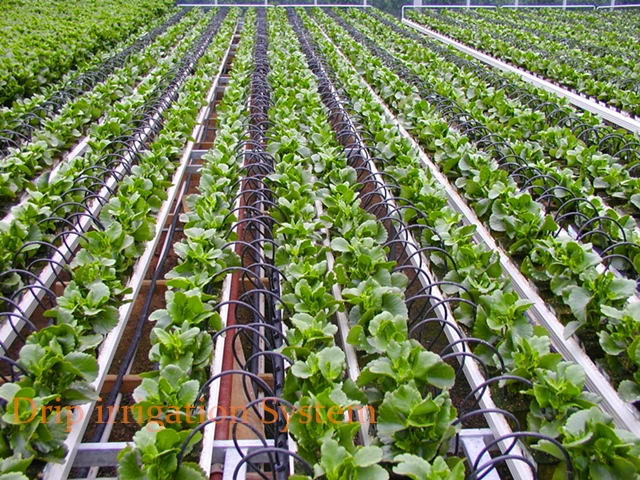Basic Info.
Product Description
Complete Set of Dripping Irrigation Equipment for Agricultural planting

Drip irrigation is a type of micro-irrigation system that has the potential to save water and nutrients by allowing water to drip slowly to the roots of plants, either from above the soil surface or buried below the surface. The goal is to place water directly into the root zone and minimize evaporation. Drip irrigation systems distribute water through a network of valves, pipes, tubing, and emitters. Depending on how well designed, installed, maintained, and operated it is, a drip irrigation system can be more efficient than other types of irrigation systems, such as surface irrigation or sprinkler irrigation.
Components used in drip irrigation (listed in order from water source) include:
- Pump or pressurized water source
- Water filter(s) or filtration systems: sand separator, Fertigation systems (Venturi injector) and chemigation equipment (optional)
- Backwash controller (Backflow prevention device)
- Pressure Control Valve (pressure regulator)
- Distribution lines (main larger diameter pipe, maybe secondary smaller, pipe fittings)
- Hand-operated, electronic, or hydraulic control valves and safety valves
- Smaller diameter polyethylene tube (often called "laterals")
- Poly fittings and accessories (to make connections)
- Emitting devices at plants (emitter or dripper, micro spray head, inline dripper or inline drip tube)

The advantages of drip irrigation are:
- Fertilizer and nutrient loss is minimized due to a localized application and reduced leaching.
- Water application efficiency is high if managed correctly.
- Field leveling is not necessary.
- Fields with irregular shapes are easily accommodated.
- Recycled non-potable water can be safely used.
- Moisture within the root zone can be maintained at field capacity.
- Soil type plays a less important role in the frequency of irrigation.
- Soil erosion is lessened.
- Weed growth is lessened.
- Water distribution is highly uniform, controlled by the output of each nozzle.
- Labour cost is less than other irrigation methods.
- Variation in supply can be regulated by regulating the valves and drippers.
- Fertigation can easily be included with minimal waste of fertilizers.
- Foliage remains dry, reducing the risk of disease.
- Usually operated at lower pressure than other types of pressurized irrigation, reducing energy costs.

Use
Drip irrigation is used in farms, commercial greenhouses, and residential gardeners. Drip irrigation is adopted extensively in areas of acute water scarcity and especially for crops and trees such as coconuts, containerized landscape trees, grapes, bananas, ber, eggplant, citrus, strawberries, sugarcane, cotton, maize, and tomatoes.
Drip irrigation for garden available in drip kits are increasingly popular for the homeowner and consist of a timer, hose and emitter. Hoses that are 4 mm in diameter are used to irrigate flower pots.


Project cases:


Our service:
*We can supply free sample for you checking quality.
*Any problem about our products will be solved at the most prompt time.
*We always offer relative technical support/consultant and kindly after-sales servie
